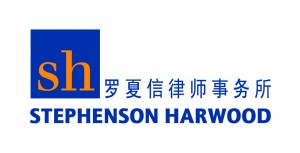6 October, 2016
In a recent judgment from the Hong Kong High Court concerning disputes arising from the construction of the Tsz Shan Monastery in Hong Kong (see the full judgment here), Jusice Anthony Chan made some interesting observations regarding the conduct of large scale construction litigation – many of which will no doubt be known to construction practitioners – particularly in respect of the use (or abuse) of pleadings and expert evidence.
Paragraphs 392-410 of the judgment are set out below – it remains to be seen the extent to which parties and their legal advisers adopt the suggestions, particularly in respect of the use of joint experts advocated by the Court.
"392. This case has served to highlight the enormous difficulty presented by the way in which construction litigation is being conducted, especially with entrenched litigants and a large volume of disputes. Construction litigation is unnecessarily complex and prohibitively expensive. This must change. To do so, one should go back to the basics.
393. I start with the pleadings. The pleadings in this case consist of 10 box files. The Amended Statement of Claim and Defence to Counterclaim is an 82-page document, accompanied by 9 Appendices. The Amended Defence and Re-Amended Counterclaim is 65-page long and came with 8 Appendices. The Amended Reply and Defence to Counterclaim consists of 100 pages and another 8 Appendices. The Rejoinder and Reply to Defence to Counterclaim together with the Further and Better Particulars generated 4 box files of papers.
394. It must be self-evident that the amount of papers generated by the pleadings have made them anything but useful.
This is reflected by the very limited number of occasions when they were referred to in the course of this trial. These documents simply do not fulfil the function of pleadings. It is an indictment of the system and those who created such documents that voluminous pleadings have become the norm in construction litigation.
395. If the basic rules of pleading were adhered to, eg, only material facts are to be pleaded, not many pages of the pleadings in this case would have survived. These pleadings were extremely expensive to produce. A quick glance at the bill of costs produced by Metta for its security for costs application heard on 16 March 2016[145]suggests that the costs incurred by it for the pleadings alone are in the realm of millions of dollars.
396. Pleadings are meant to be a simple road map of the disputes between the parties: see Liu Hsiao Cheng v Wong Shu Wai & Ors, HCA 1278/13, unrep, 21 August 2015, §§48-56. Voluminous pleadings create a serious obstacle for the court, which is always working under time constraints, in understanding the issues in the case, and inhibit it from managing the case in an effective manner.
397. There is no good reason to render the pleadings impenetrable by including minute details, evidence and arguments. The basic rules must be followed and enforced by the court.
398. The details contained in the pleadings in this case are astounding. For instance, Metta’s defect claims are contained in App 10B – a 31-page document of very small print on A3 size papers containing 1,661 line items. The document has been shown to be incomprehensible. That aside, one has to ask whether there was any good reason to expend an enormous amount of resources and costs to produce such a document in the first place. It was inevitable that expert evidence would be adduced on the defect claims, and much of the pleadings on the same would later be overtaken by the expert evidence.
399. All the alleged defects in this case were set out in NCFs which had been served on Chun Wo. For purposes of pleading its case, Metta could have referred to the relevant NCFs and list them out in an appendix.
400. There should have been no cause for complaint by Chun Wo with this approach, assuming that it was minded to conduct this litigation with proportionality and economy of costs in mind. Once the expert report(s) on the claims became available, it would become clear which claims would be disputed and which not.
401. To give another example, there are 27 EOT claims made by Chun Wo, 20 in respect of MS-1 and 7 for MS-2. 55 pages of details concerning these claims were set out in Appendix D to the Amended Statement of Claim and Defence to Counterclaim. Metta responded to Appendix D by way of Appendices 3 and 3A of the Amended Defence and Re-Amended Counterclaim, some 234 pages of details in all. It would have taken days for any tribunal to properly digest such materials. Some of EOT claims were subsequently abandoned in light of the expert evidence.
402. For purposes of pleading its case on EOT, I do not believe that it was necessary or helpful for Chun Wo to do more than referring to the EOT applications. That would adequately inform Metta of its claims with the mutual expectation that they would in due course be refined, and probably reduced, once the expert(s) had investigated the claims.
403. I believe that such an approach can, and should, be adopted generally in construction litigation, with the knowledge that the details of the case will later be set out in the expert report(s). This approach would be conducive to keeping the pleadings within reasonable length so that they can serve their function properly.
404. The enormity of the pleadings in this case has exposed another critical problem – they hindered the proper investigation by the experts. The evidence of Mr Allington serves to highlight the problem. The programming issues agreed by the parties[146]dictated that Mr Allington must consider the relevant pleadings, which embraced every conceivable dispute (not to mention arguments), before coming to a view on the impact of various events on the completion of the Works. It proved to be a near impossible task. In his evidence, Mr Allington agreed[147], as did Mr Wardale[148], that the proper approach is for the experts to look, by applying their training and experience, at the facts of the case and to identify the relevant events. They would then be in a position to assess the delay claims against those events.
405. What happened in this case is that the tail was wagging the dog. The experts were burdened with volumes of materials drafted by lawyers and had to conduct their works in accordance with the same. The upshot was that the enormous amount of costs incurred in drafting these materials actually served to further complicate the litigation and multiply the costs. Most importantly, such materials are unhelpful for purposes of achieving a just resolution of the issues.
406. Unhelpful pleadings must be nipped in the bud. They hinder the case management by the court (apart from other problems). Litigants who put forward unhelpful pleading can expect, at least, to be asked to justify the costs incurred even if they succeed in their actions (see Lui Hsiao Cheng, §49). One of the lessons learned from this case is that the court will have to consider, of its own motion, striking out pleadings which fail to comply with the rules[149].
407. The second lesson to be learned from this case concerns the expert evidence. There was an unusually large number of expert witnesses in this case[150]. Their evidence took up a significant portion of the trial. The number of such witnesses would have halved if single joint expert were instructed on every discipline. This would result in shorter trial, which normally means earlier hearing date and swifter resolution, and considerable costs reduction. See also the observations made by the Court of Appeal in Good Faith Properties Ltd v Cibean Development Co Ltd [2014] 5 HKLRD 534, §51.
408. There were challenges made in this case on the impartiality of some of the expert witnesses. It has been shown that, despite the enhancement of the rules on impartiality of expert witnesses introduced under CJR[151], a determined litigant would not shy away from attempting to influence the evidence of such a witness. The instruction of single joint experts would render such challenge redundant. Impartial expert evidence is essential for arriving at a just decision.
409. Experience in this case shows that, with a single joint expert, the parties were able to focus on the handful of real issues, and the cross-examinations were conducted efficiently and expeditiously.
410. With respect, I suggest that instructing single joint expert should become the norm. Parties will have to justify why such an expert should not be preferred over separately instructed experts."
For further information, please contact:
Phillip Rompotis, Partner, Stephenson Harwood
phillip.rompotis@shlegal.com

.jpg)





